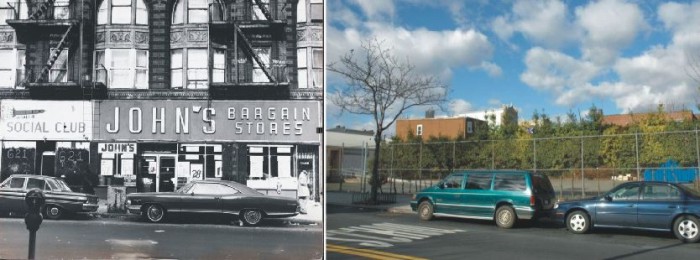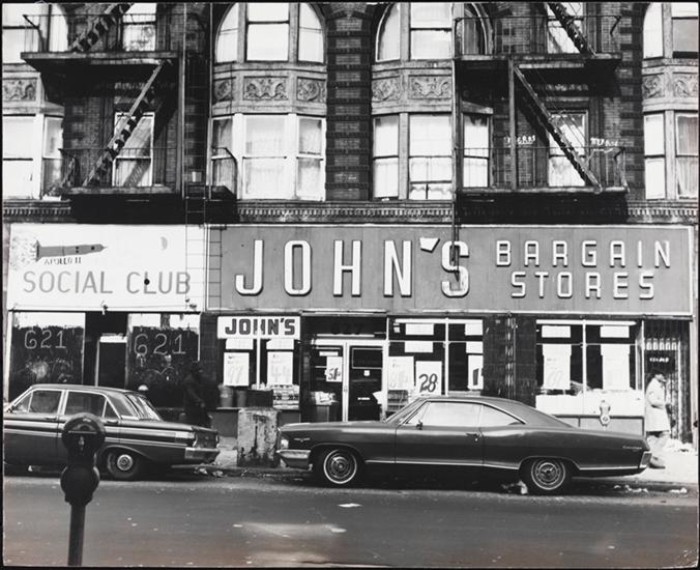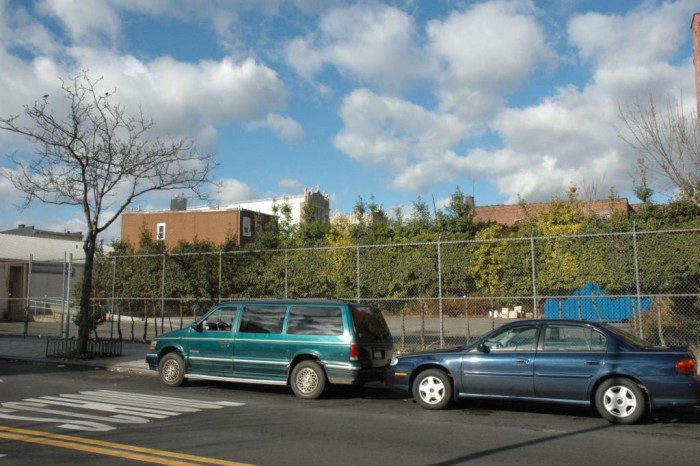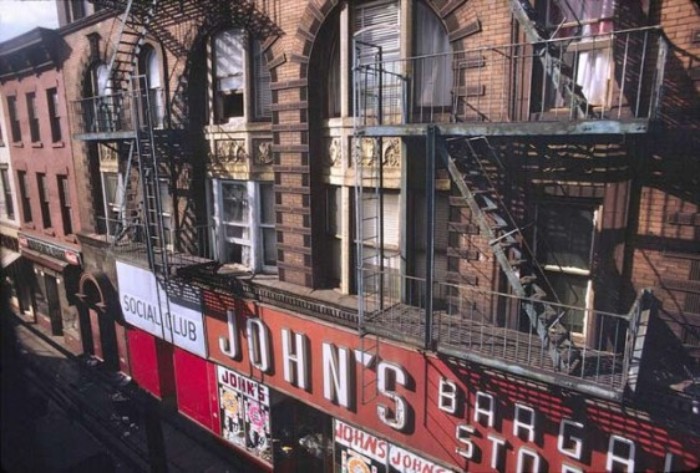Past and Present: John’s Bargain Stores
A Look at Brooklyn, then and now. If you are old enough to remember the Beatles, and grew up in New York, chances are you remember John’s Bargain Stores. Long before the dollar stores, and even the job lot stores that used to be everywhere in the city, there was John’s, and their signature red…


A Look at Brooklyn, then and now.
If you are old enough to remember the Beatles, and grew up in New York, chances are you remember John’s Bargain Stores. Long before the dollar stores, and even the job lot stores that used to be everywhere in the city, there was John’s, and their signature red and white signage. The stores were mostly located in working class and lower income neighborhoods, and were popular shopping destinations for generations of people who didn’t have a lot of money, or for those who loved a good bargain.
John’s became famous under the leadership of David Cohen, himself the most classic of New Yorkers. He was the fifth child of his parents, born in Rockaway Beach in 1921, the only child in the family to have been born in a hospital. His mother didn’t know she was pregnant, and thought she had a tumor. She went to the hospital to have it treated, and delivered her fifth child. David always said his family was too poor to have the luxury of middle names.
David’s father Harry made a living selling goods from a horse and wagon. He also ran games of chance on the Rockaway Beach boardwalk. In the winter, he would buy overstock goods from stores and rent his own pop up shop for the season, selling his wares. He finally decided to open his own store in South Ozone Park, Queens. It was Harry who named his store “John’s,” in spite of the fact that there was no one in the family named John. The local shoppers began calling it Cheap John’s, because there were competitors in the neighborhood named Cheap Charlie’s and Cheap Sam’s.
David Cohen worked in his father’s store, so much so that he dropped out of school in the sixth grade, and went to work full time. By the time he was an adult, he and his siblings decided to take their father’s concept into a larger arena, and expand big time. Harry Cohen died in in 1963. They continued to buy job lots and overstock from manufacturers, but as the number of stores grew, they were able to demand reduced prices for volume orders and commission new items, a time honored practice that would also grow discount stores like Walmart and Target.
During these 1960s growing years, John’s established a retail record for a chain, ordering 250,000 dozen units of an item at a single time. They also undercut their competition, marking up only 38%, making up the money in the sheer volume of sales. John’s was also famous for buying out of season, filling the stores with Christmas toys right after the holiday, selling swimming suits in winter and ski hats in summer. Customers loved it, never knowing what would be on the shelves, which kept them coming back regularly.
Most John’s stores were located in down market areas. The 1960s and 70s were a rough time for New York, and cities in general, and John’s was able to find a home in buildings that had large retail spaces that were now empty, as businesses closed or moved to the new malls in the suburbs. Former supermarket locations were ideal for John’s stores; they were large, and the landlords were thrilled to be able to rent the entire space, although Mr. Cohen was a hard bargainer. His favorite location was the site of a former supermarket that had simply moved nearby to a larger space. He was often able to get a great rent deal because those markets did not want another supermarket nearby competing with them.
By the mid-1960s, at the chain’s peak, there were 527 stores along the Eastern Seaboard and in Puerto Rico. But in 1966, everything changed. David Cohen, the CEO and brains of the company, was in a serious auto accident that took him a full year to recover from, and was out of the picture. In the meantime, the company over-expanded, and was plagued by shoplifters whose theft was seriously cutting into the bottom line. Without David at the helm, in 1967, the company filed for bankruptcy protection. The company was sold, and before the mid-1970s, was gone.
This Brooklyn store was in the ground floor retail space of a once grand flats building on Myrtle Avenue, between Kent and Franklin. The address was 627 Myrtle Avenue. Today, the entire building is gone, as is much of the rest of the block. This is now prime real estate, so it won’t be empty forever. The photograph is from the collection of the Museum of the City of New York, and dates from 1971, at the very end of John’s Bargain Store’s existence. In fact, from the papers on the windows, it looks like this was the final close-out.
Myrtle Avenue’s history at that time was a bleak as John’s prospects. The once grand boulevard was a loud and dirty place, with the Myrtle Avenue El rumbling overhead, connecting eastern Brooklyn to Downtown. In spite of the noise and the tracks, the stores on Myrtle did a brisk business, due to all of the pedestrian traffic. Living near here was convenient to transportation, not the long walk it is today. The train made for an easier commute for those connecting to the A/C/F at Jay Street, as well as for the thousands of people who worked at the Navy Yard and in the factories and warehouses of Wallabout.
Still, Myrtle Avenue was nicknamed “Murder Avenue” and could be a dangerous place, especially at night. It would take another 60 years to bring the avenue back. The last train rolled down the el tracks in 1969, and the stations and tracks were removed soon afterward. They were gone when this photograph was taken. John’s is long gone and forgotten by most. The el is gone, Myrtle is now a destination street again, and Brooklyn continues to change.








Old John’s Bargain Stores commercial, early 1960s: (go to 07:29, it’s on a blooper reel with other kids’ show ads) https://www.youtube.com/watch?v=bCbu8UL9Rr8
I grew up in midtown Manhattan and well remember the local John’s on 34th near 8th. I hated to have to wear their cheapo merchandise but now of course, it’s a nostalgic memory. Thanks!
You are showing the wrong lot in the current picture. It was actually the corner lot “1898/73” Which now reads as 1898/1. Which corners Kent Ave and Myrtle. The EPA currently uses the lot, which was empty by the 1980s Tax Photo. Looks like there were a number of buildings taken down in order to create this lot. The picture you show is “1898/67”
OMG, Montrose! LOL! What a blast from the past! My mother did not shop there, but my across-the-street best friend’s Mom loved that place and I was so glad she did. She always took us, and we took our babysitting money. Bought a whole new wardrobe at John’s! As your other commenter noticed though, that meant my best friend and I were often wearing the same clothes. Her mother used to call us “The Gold Dust Twins,” another blast from the more distant past!
I remember those stores, especially when the ladies would show up at a party all wearing the same dress from Johns Bargains. Lol
Never a reason to be snarky. You do great work !